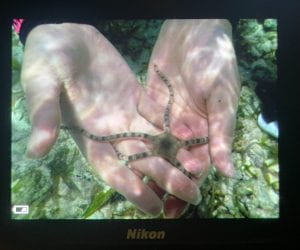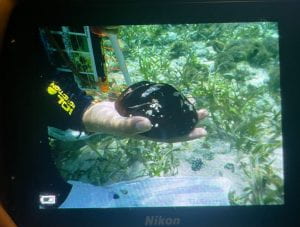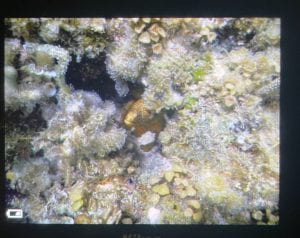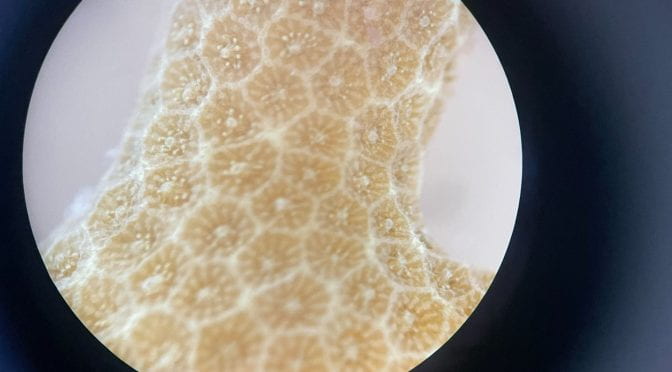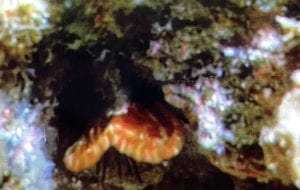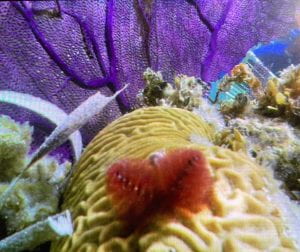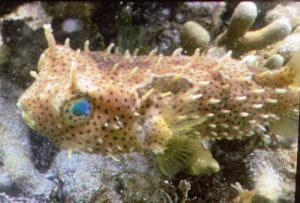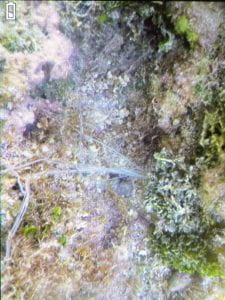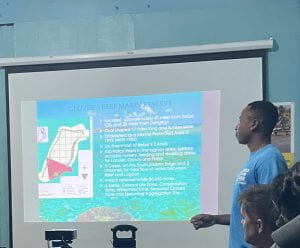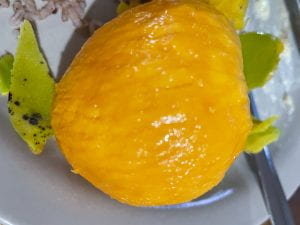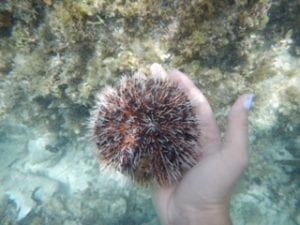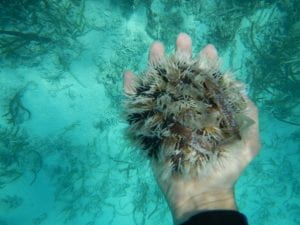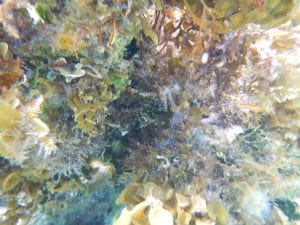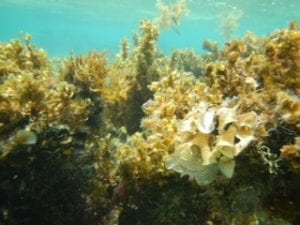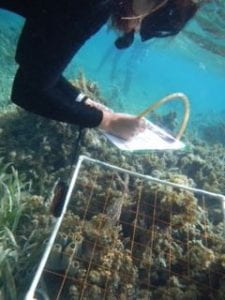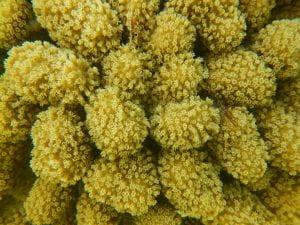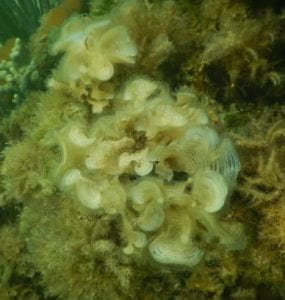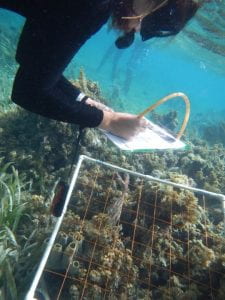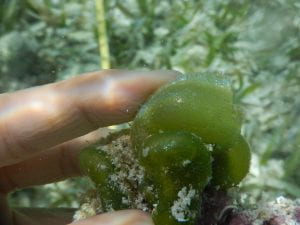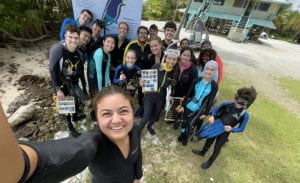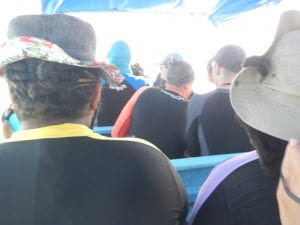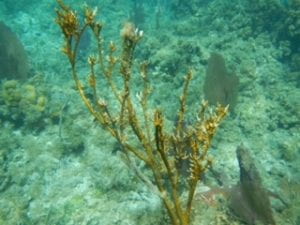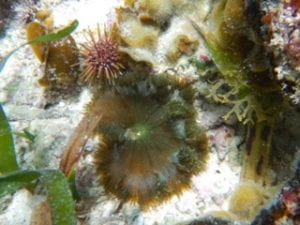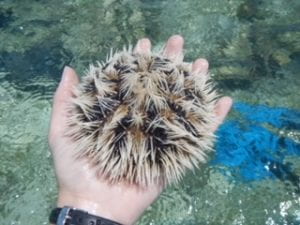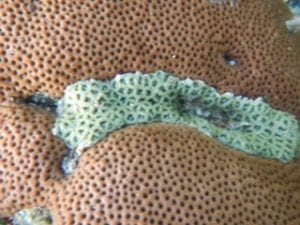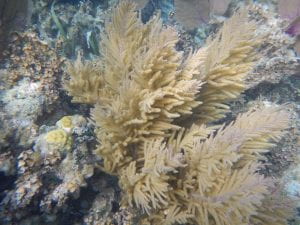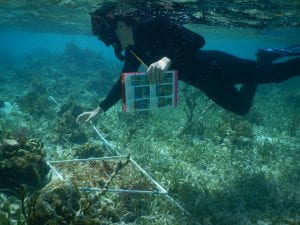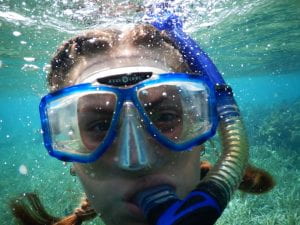Hi all, it’s Faith with Day 5 updates from the 2022 Belize trip!!!
DISCLAIMER: I just wrote this whole blog, and then the draft didn’t save, so here is an abridged version of what got deleted since we wake up at 6am and its almost 11 and I’m really tired 🙂
Today we woke up and continued collecting data to answer our research question. We did two snorkels on MPA reefs ( we called them MPA reefs 1 and 2, boring I know). These reefs had more cover than the non-mpa protected areas; however, they also had a lot of algae growth. Because these reefs were deeper and the tide was calmer, it was easier to measure the % live and dead coral. We also were way more successful at catching urchins. We caught about 113 total with the majority being E. viridis. However, we also saw 3 pencil slate urchins E. tribuloides, a west indian sea egg Tripneustes ventricosus (We had a bond. He latched onto me with his tube feet and held on for dear life, so I named him Fuzzy), and a super special live Clypeaster rosaceus sea biscuit. (We usually find them dead so we got very excited). Lastly, but not least the Marine sea offcicers found some brittle stars for me since I can’t ever find them. We saw a common spiny brittle star Ophicoma echinata and a O. cinera, a banded brittle star. They were both found under rocks and coral. We only found one Diadema antillarium today and he was under some coral. We did see a nice eel on this reef (pictured below) he didn’t scare me. I decided to call him Floyd.
After the boat drove us back, we watched 3 presentations on crustaceans, green algae, and climate change’s effects on coral. Then we enjoyed some relaxation before out next dive.
Our final dive of the day was at the seagrass beds and barrier reef behind our dorms. I noticed big differences between the two areas even though they were right next to each other! The seagrass beds were extremely warmer with ample algae and a greenish water color. Meanwhile, the barrier reef was freezing cold with a pretty aqua color. It had dead coral piled up the the surface, but sea urchins and other small creatures made their homes in the rubble. I didn’t see any echinoderms in the seagrass beds, but we saw a an eel, a stingray, 3 lionfish, 3 lobster, a white anemone, spaghetti worms (which are very fun to mess with), and a pufferfish. The pufferish and eel scared the living daylight out of me because I found them by being directly above them (which made them very upset). The eel snapped at me, but the pufferfish just stayed in place. It was scary… I named the scary eel Jade, and he has no picture.
We came back to watch 2 presentations: 1 by the coast guard and 1 by the island manager. I learned lots of interesting facts about how they keep the island “human-free.” But the most interesting fact to tell all of you is that I’m too short to join the Belizean coast guard. You have to be 5’3″ to apply as a girl and 5’5″ to apply as a guy!!!
Till tomorrow!
QOTD: “It’s commiting crabicide!” … “Did you just say crab-i-cide?”
“What does TBF mean?” (TBF, aka Tropical Field Biologists, aka what we have been called since our first meeting in March)
